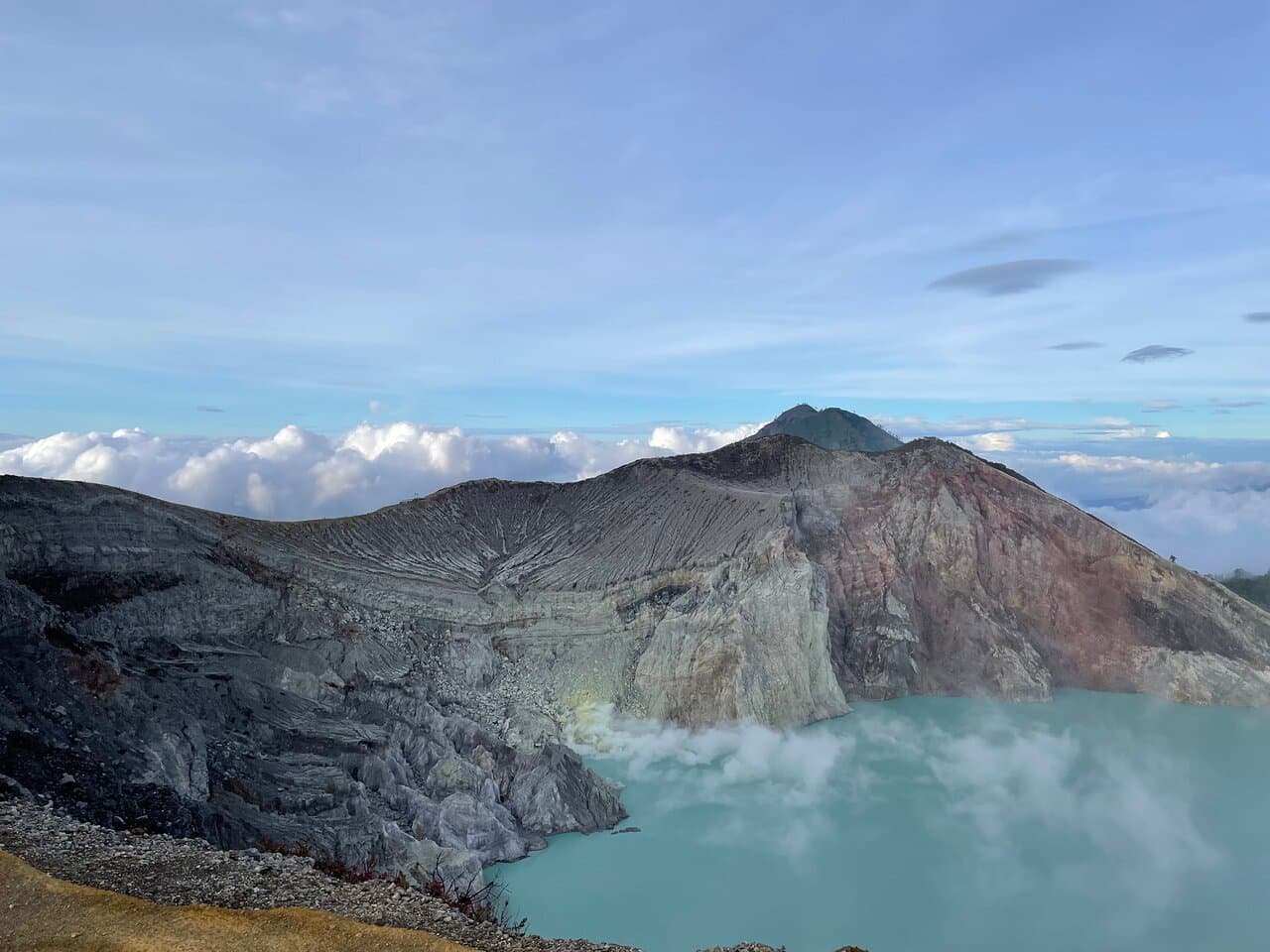10 Things You Need to Know Before Hiking Mount Ijen (Especially If You're Doing It at Midnight)
30 April 2025 05:33

So you’ve heard about Ijen Crater — the place with electric-blue flames, a toxic turquoise lake, and miners carrying sulfur blocks like it’s no big deal.
Sounds surreal, right? Well, it is. But it’s also a real physical adventure, especially when you start your hike at midnight.
If you're planning to tackle Mount Ijen (or still deciding), here are 10 essential things you really should know.
Trust us, you’ll be glad you read this before lacing up your boots. 😉
1. The Blue Fire Only Appears at Night
The famous blue flames are caused by ignited sulfuric gas — and they’re only visible in the dark. That’s why most tours start around 12:00 AM, so you can reach the crater before sunrise.
Best viewing time? Between 1:30 AM to 4:00 AM, before the morning light washes it out.
🔥 Pro tip: Cloudy weather might reduce visibility, so check conditions before you go (or go with a guide who knows the drill).
2. It’s Not an “Easy” Hike (But It’s Worth It)
While the trail isn’t super long (about 3 km up, 1.5–2 hours), it’s steep and steady uphill. Expect to sweat — and maybe even question your life choices halfway up.
But once you see the blue fire flickering inside the crater, it’s all worth it.
🥾 Fitness level: Moderate. You don’t need to be an athlete, but some basic stamina helps a lot.
3. Bring a Proper Gas Mask — Not Just a Cloth Mask
There’s sulfur gas near the crater — and trust us, a buff or regular face mask won’t cut it. You need a proper respirator with filters (usually provided by local guides or included in tours).
😷 Breathing sulfur fumes directly is not only painful — it’s dangerous.
4. You Might Cry (Because of the Sulfur, Not the View)
Even with a gas mask, your eyes might sting or water from the fumes. If you wear contacts, swap them for glasses just for this hike. Bring eye drops if you’re sensitive — they help a lot after the descent.
5. You’ll Be Sharing the Trail with Real-Life Sulfur Miners
One of the most humbling parts of Ijen is seeing miners carrying 70–90 kg sulfur loads up and down the mountain, daily. Be respectful. Give them the right of way on narrow paths. And maybe even buy a souvenir sulfur carving if they offer — it’s a way to support them.
6. It Can Get REALLY Cold at the Start
At midnight, temperatures near the base can drop to 8–10°C, and it gets colder near the top. Layer up! A thermal base layer, hoodie/fleece, and a windproof outer shell work best. Gloves and beanies help too — especially when you stop moving.
🌡 Don't underestimate the cold. You’ll thank yourself later.
7. A Flashlight or Headlamp is a Must
The trail has no lighting at all, and phone flashlights aren’t reliable (plus they eat battery fast). Bring a headlamp with extra batteries — or you’ll be walking blind.
8. The Crater Descent is Optional — and Not for Everyone
To see the blue fire up close, you need to descend into the crater (~30 minutes). It’s steep, rocky, and slippery, especially in the dark. If you have knee issues, vertigo, or just don’t feel safe, it’s OK to stay up top and admire from a distance.
🧗♂️ No shame in skipping the descent. Safety first, always.
9. It’s Better (and Safer) with a Local Guide
Sure, you can do Ijen independently, but guides:
- Know the trail well
- Help you avoid dangerous spots
- Provide gear
- Share stories and local culture
They also know when to abort the descent if conditions are unsafe. Don’t risk going alone unless you're very experienced.
10. Sunrise Over Ijen is Seriously Underrated
Everyone talks about the blue fire, but few mention how amazing sunrise looks from the rim. As the sun rises behind the mountains, it slowly reveals the vibrant turquoise crater lake — one of the most acidic on Earth — with smoky sulfur clouds swirling above it.
📷 Don’t rush back down! Stay a bit longer and soak it all in. This view is pure magic.
Bonus Tip: You Can Combine Ijen with Bromo and Tumpak Sewu
If you're already in East Java, why not go all out?
Most travelers combine Ijen with Mount Bromo and Tumpak Sewu Waterfall for the full adventure. That’s 3 iconic places in just a few days — especially with a 5D4N itinerary.
Check out our complete trip guide if you're up for the challenge.
Beautiful, Brutal, Unforgettable
Hiking Ijen is not your average volcano trip. It’s cold, dark, sometimes smoky, and physically challenging — but also mind-blowingly beautiful, deeply humbling, and something you’ll remember forever.
👉 Want a guide who handles all the gear and logistics?
Check out our Ijen Midnight Tour package at TrekJava Online!
We’ll make sure your only job is to hike and say “wow” a lot. ✌️